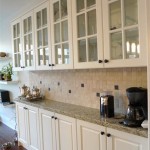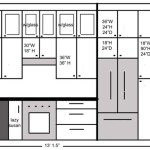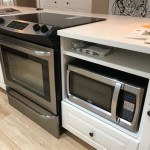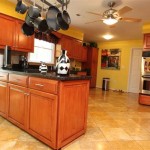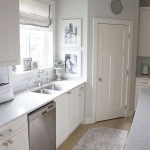Rectangular Tray For Kitchen Counter: Organization and Style
Rectangular trays for kitchen counters have emerged as indispensable tools for maintaining organized and aesthetically pleasing kitchen spaces. Their versatility extends beyond mere functionality; they serve as decorative elements that can enhance the overall ambiance of a kitchen. From corralling essential cooking ingredients to displaying decorative items, the applications of rectangular trays are diverse and impactful.
The prevalence of open-concept kitchens in modern homes has further amplified the need for effective organization solutions. Kitchen counters, often the focal point of the overall design, require careful consideration to avoid clutter and maintain a visually appealing environment. Rectangular trays provide a designated space for frequently used items, preventing them from being scattered across the countertop. This approach not only improves organization but also contributes to a more spacious and inviting kitchen.
The selection of a rectangular tray involves considering several factors, including material, size, style, and purpose. Each factor plays a crucial role in determining the tray's suitability for a particular kitchen and its intended use. A well-chosen tray can seamlessly integrate into the existing décor while providing a practical solution for organizational needs. The following sections will explore the various aspects of rectangular trays, offering guidance on selecting the ideal tray for maximizing both functionality and aesthetic appeal.
Material Considerations for Rectangular Trays
The material of a rectangular tray significantly impacts its durability, aesthetics, and maintenance requirements. Common materials include wood, metal, plastic, and acrylic, each offering distinct advantages and disadvantages.
Wooden trays offer a natural and warm aesthetic, often complementing traditional or rustic kitchen designs. They can be crafted from various types of wood, such as bamboo, acacia, or mango wood, each with its unique grain pattern and color. However, wooden trays are susceptible to moisture damage and require regular sealing or oiling to maintain their appearance and prevent warping or cracking. They are generally not dishwasher-safe and require handwashing to avoid water damage.
Metal trays, typically made of stainless steel, brass, or wrought iron, offer a sleek and modern appearance. Stainless steel trays are highly durable, resistant to corrosion, and easy to clean, making them a practical choice for kitchens. Brass trays add a touch of elegance and sophistication but require more frequent polishing to maintain their shine. Wrought iron trays offer a rustic and industrial aesthetic but can be heavy and prone to rusting if not properly coated.
Plastic trays are lightweight, affordable, and available in a wide range of colors and styles. They are generally easy to clean and resistant to moisture damage, making them a convenient option for everyday use. However, plastic trays may not be as durable as wooden or metal trays and can be prone to scratching or staining. The environmental impact of plastic also requires consideration.
Acrylic trays offer a modern and transparent aesthetic, allowing the items displayed on the tray to be fully visible. They are lightweight, durable, and easy to clean, making them a practical and stylish choice. However, acrylic trays can be prone to scratching and may require special cleaning solutions to maintain their clarity. They are also generally more expensive than plastic trays.
When selecting a material, it is important to consider the kitchen's overall aesthetic, the tray's intended use, and the desired level of maintenance. A wooden tray might be ideal for a farmhouse kitchen, while a stainless steel tray could be a better fit for a modern kitchen. A plastic tray might be suitable for everyday use, while an acrylic tray could be used for displaying decorative items.
Sizing and Configuration for Optimal Kitchen Counter Use
The dimensions of a rectangular tray are critical for ensuring effective organization and preventing countertop clutter. A tray that is too small may not accommodate all the desired items, while a tray that is too large can take up valuable counter space. The ideal size will depend on the available countertop area, the number of items to be stored, and the desired aesthetic.
Before selecting a tray, it is advisable to measure the available counter space and consider the items that will be placed on the tray. Common items for kitchen counter trays include salt and pepper shakers, oil and vinegar bottles, spice jars, coffee canisters, and small appliances such as toasters or blenders. The tray should be large enough to comfortably accommodate these items without overcrowding.
The height of the tray's sides is another important consideration. Trays with higher sides can prevent items from sliding off and provide a more secure containment solution. This is particularly useful for storing liquids or items that are prone to tipping over. However, trays with very high sides can also make it difficult to access the items inside.
Some rectangular trays feature built-in compartments or dividers, which can further enhance organization. These compartments can be used to separate different types of items, such as spices, utensils, or coffee accessories. Trays with dividers are particularly useful for preventing small items from becoming lost or mixed together.
The configuration of the tray should also complement the layout of the kitchen counter. In corner spaces, a rectangular tray can be used to create a designated zone for specific tasks, such as coffee preparation or spice storage. On longer countertops, multiple rectangular trays can be used to create distinct organizational zones, each serving a different purpose.
Ultimately, the ideal size and configuration of a rectangular tray will depend on the specific needs and preferences of the user. Careful consideration of these factors will ensure that the tray is both functional and aesthetically pleasing.
Styling and Functional Applications of Rectangular Trays
Beyond their organizational benefits, rectangular trays serve as decorative elements that can enhance the overall aesthetic of a kitchen. They provide a canvas for displaying items in a visually appealing manner, adding personality and style to the countertop.
One popular application is creating a coffee station, where a rectangular tray serves as a designated space for coffee canisters, sugar bowls, creamers, and mugs. The tray can be personalized with decorative elements such as coasters, spoons, or small plants. This approach not only keeps coffee-related items organized but also creates a visually appealing and functional coffee corner.
Another common use is corralling cooking ingredients near the stovetop. A rectangular tray can hold frequently used spices, oils, and utensils, keeping them within easy reach while cooking. This reduces clutter and streamlines the cooking process. Using matching containers and labels can further enhance the organization and aesthetic appeal of the tray.
Rectangular trays can also be used to display decorative items, such as vases, candles, or small sculptures. These items can add a touch of personality and style to the kitchen, creating a more inviting and welcoming atmosphere. The tray provides a cohesive platform for grouping these items together, preventing them from feeling scattered or disjointed.
In kitchens with limited counter space, a rectangular tray can serve as a temporary workspace. For example, a tray can be used to hold chopping boards and knives while preparing vegetables, or to hold ingredients while baking. This keeps the countertop clean and organized, making it easier to manage the cooking process.
The styling of a rectangular tray should complement the overall design of the kitchen. For a modern kitchen, a sleek and minimalist tray made of stainless steel or acrylic might be a good choice. For a farmhouse kitchen, a rustic wooden tray with distressed finishes could be more appropriate. The colors and textures of the items displayed on the tray should also coordinate with the kitchen's color scheme.
By carefully considering the styling and functional applications of rectangular trays, homeowners can create organized, aesthetically pleasing, and highly functional kitchen spaces. These trays are more than just organizational tools; they are versatile design elements that can enhance the overall ambiance of the kitchen.
In conclusion, rectangular trays offer a multi-faceted solution for kitchen counter organization and design. Their versatility, combined with the wide variety of materials, sizes, and styles available, makes them an indispensable asset in any kitchen.

Woven Rectangular Serve Tray With Curated On Ltk

Steel Tray Rectangular For Countertop Large Serving Black Vanity Display Kitchen Storage Bathroom Etsy

Concrete Rectangle Tray Grey

Countertop Tray White Oak Pedestal Kitchen Counter Bathroom Vanity Wooden Etsy

Neutral Kitchen Decor Tray Styling Counter Top

Niubee Decorative Tray For Coffee Table Rectangular Clear Serving Kitchen Counter Dining Room Or Bed Use Centerpiece Acrylic

Rectangular Basic Marble Tray Le Home Decor Studio

French Kitchen White Marble Rectangle Tray Cheese Board Platter Reviews Crate Barrel

2pcs Stainless Steel Tray Kitchen Counter Mercadolivre

Counter Organizer Tray The Lovemade Home

